Fascination with miniature versions of something grand, like an automobile, may seem frivolous, silly even. Items like this, arguably little more than trinkets, serve very little if any practical purpose. While they may be faithful recreations of something larger, they are just that, recreations. By the same token, though, our ceaseless and at times almost obsessive fascination with the larger automobiles themselves can also seem frivolous. Like models and toys, so many of the automobiles that arouse the greatest interest provide little more than recreation and visual beauty.
And even though the car always comes before the model, the miniature can still play a formative role in a given person’s automotive interests. It is important to remember that for those enthusiasts whose passion dates back to their childhood, the first encounter with a dream car was typically not in the driveway or on twisting back roads during a blissful ride in the passenger’s seat, but with a tiny scale model perched on a bookshelf or bedside table. And thanks to the cruel laws of supply and demand, for many of those who covet a particularly rare dream machine, the well-produced scale model is the closest they will get to ownership of the real thing.
The world of model automobiles, while grounded in imitation, is not completely bound by it, nor is it just a mirror of the world of the larger automobiles upon which the models are based. Model cars have always had a fairly distinct community, and the subtle differences, even within representations of one individual car, can be vast. A full account of model and toy cars would of course be quite excessive. The story of one selection of model cars, however, captures the essence of the model car’s purpose as well as the intricacies of the model car industry and the interesting changes in that industry. The story of Mercedes-Benz SL models through the years accounts for the faithful recreation of a dream car for the masses, the collaboration with car manufacturers, and the cheaper, more crudely-made alternatives that make for serious competition. It explains what motivates the very existence of these models and toys, and our continual interest in them both as faithful renditions of actual automobiles as well as on their own merit as quality manufactured pieces.

Mercedes-Benz Model Toys
The drive to represent important elements of our lives in miniature form has been a definitive part of human culture almost since the beginning, as demonstrated by prehistoric animal figures and toys, while replicas of carts and horse-drawn carriages from antiquity sprang from a similar mindset as the model cars of today. Since the invention of the automobile by Carl Benz and Gottlieb Daimler in 1886, the motor car has been an established favorite within the world of miniatures and toys. In particular, model sports cars have evoked especially strong emotions, drawing from the pure, precise excellence of the cars in their original form. The distilled essence of fascination finds itself in one gleaming silver wind-up toy car. The tiny model of the 300 SL racing car, first produced in 1953, is a mere twelve centimeters long, but it provides more than enough space on which to project the extraordinary reputation that surrounds the original.
It is important to remember that for those enthusiasts whose passion dates back to their childhood, the first encounter with a dream car was typically not in the driveway or on twisting back roads during a blissful ride in the passenger’s seat, but with a tiny scale model perched on a bookshelf or bedside table.
The Dux brand toy car, manufactured by Markes and Co. in Lüdenscheid, marked the beginning of a great and fascinating tradition. The Mercedes-Benz SL series of cars has been one of the most represented automobiles in miniature format, particularly the 300 SL Coupe ( W 198 I, 1954 to 1957) and the 190 SL (W 121, 1955 to 1963). These cars, now iconic classic automobiles, both remain popular as models even today due to their timeless beauty. These enduring series of models showcase the wide range of sizes, materials and attention to detail that has characterized the culture of model cars. They also show how innovative processes have entered the toy industry over several decades, such as how deep-drawn tin bodies gave way to injection-molded plastic and/or metal, and how wind-up engines were replaced by electric drives.


The history of toy and model cars based on various incarnations of the Mercedes-Benz SL sports car is almost as long as that of the SL class itself. This link between real-life cars and their miniature versions has been a constant factor in the history of the automobile. From racing and sports cars to saloons and even heavy trucks, toys and models represent vehicles of every type and from every period. The evolution of model cars has necessarily flowed parallel to the evolution of the automobiles they represent, and while model cars have had a distinct automotive subculture surrounding them, they will always be inseparable from the wider world of the automobile. The Mercedes-Benz SL and its miniature renditions are fine examples of this fascinating relationship between real cars and the celebrations of them that come in model form.
Reflecting the SL Tradition
Many of the other cars in the Mercedes-Benz SL line have also enjoyed great popularity in the world of toy and model cars, right from the moment of introduction. Six decades of SL tradition have seen the creation of a whole universe of miniatures of these Mercedes-Benz sports cars, from the W 194 racing car and model series W 198 (300 SL) and W 121 (190 SL) to the ‘Pagoda’ W 113 from 1963 and model series R 107 (1971), R 129 (1989), R 230 (2001) and R 231 (2012).

Over the same period, there was an increasingly noticeable differentiation in the purpose and the target groups for these miniatures. On the one side were the sturdy replicas of Mercedes-Benz originals made for active play, while on the other was an increasing number of more and more detailed models whose intricate designs appealed mostly to collectors who wanted to display these little works of art in showcases.
Sports Cars – A New Beginning for Mercedes-Benz and the Toy Industry
When the miniature of the 300 SL racing car (W 194) was released under the Dux (lat. ‘leader’) brand in 1953, the Mercedes-Benz 300 SL Gullwing Coupe (W 198) was still a secret development project at Mercedes-Benz. The design of the 1953 Dux model was, of course, based on the profile of the prototype racing car that had already burst onto the world stage and scored numerous important victories for the German car maker. But the W 194 already gave a taste of the line and the aesthetics of the now iconic 300 SL production vehicle that was eventually launched at the International Motor Sports Show in New York in 1954. The toy industry was happy to take this bright new beginning for Mercedes-Benz in the sports car sector as an incentive to create a whole new world of models.
In technical terms, the 1953 Dux miniature was designed and built according to the traditional principles used in most toy cars of the period. The body was deep-drawn from tin and then joined to the frame. This technique was used as early as the mid-1930s, in the well-known replica of the Mercedes-Benz W 25 racing car produced by Schuco. This little Silver Arrow is still being made today.
For its 300 SL, Dux decided not to use the normal process of sticking tin flaps through slots and then bending them over, but instead went for screw fastenings. This method enabled the proud owner of the model to open the 300 SL (screwdrivers and spanners were supplied) and even to remove the wind-up engine. A few years later, the metal construction kit “Auto-Dux” even contained a dismantled version of the 190 SL (W 121), which had to be assembled before you could play with it. SL sports cars were later also offered as plastic model kits by a variety of manufacturers. The change from tin to plastic represents a paradigm shift that affected the entire model car sector. Not only were new materials introduced, but different manufacturing techniques and other forms of propulsion became established, especially from the 1960s.
The fascination of the original wind-up tin car remains. These toys are technical reminders of the period characterised by the 300 SL as the first series sports car in its family. In the 1990s, Märklin used this very technology to produce an impressive large-scale model of the W 198 I, including a limited edition for the 40th anniversary of the Federal State of Baden-Württemberg (silver) and a museum model (red).
300 SL Models Emulate Export Success
Soon after the launch of the W 198 I, a large number of tin miniatures emulating the Gullwing coupe hit the international toy market. More than a few of them, such as a few Japanese-made versions, were rather crudely made. These tin models of the 300 SL didn’t sell very well in Germany, and the vast majority sold well in foreign markets. The popularity of these original models present another parallel between the original Mercedes-Benz automobile and the models that based themselves upon it. Both were successful exports right from the start.



Some other very fine miniatures were produced in Germany, such as the model made by Tipp & Co./Tippco with electric drive and functioning column shifter. This toy car not only lived up to the technical standards of the original, it also matched the luxury sports car’s premium price. The 300 SL from Tipp & Co./Tippco would set you back DM23, a rather serious amount of money for a toy in the mid-1950s.
While German toy manufacturers showed some reluctance towards the 300 SL at first, this all changed in 1955 with the 190 SL Roadster. Eventually, the vast majority of all models of this open-top sports car were made by traditional German firms such as Gama, Huki (Kienberger), JNF, Kellermann, Schuco, and Seidel. In terms of design, these miniatures followed the models of the 300 SL, i.e. they had a tin body that was painted or lithographed.
Technical Innovations in the Toy Sector
Certainly not all technical details of a real sports car can be accurately reproduced in a model, but since the launch of the first 300 SL as a competition car, development in the toy sector has been characterised by a number of important innovations. These range from the production of the body through injection moulding to using processes such as photo-etching for the decor. This development can be seen particularly well in the 300 SL from model series W 198 I and the 190 SL from model series W 121. Both of these Mercedes-Benz sports cars are still being offered in model form by a number of manufacturers, with significant variations in their attention to detail and, accordingly, in price.
The evolution undergone by models can be demonstrated using the example of the 300 SL Coupe by Wiking, made from plastic on a scale of 1:87, which was first introduced with the 1956 price list. At that time, the Gullwing sports car, on the same scale as an H0 gauge model railway, had a body without holes for the windows and the glass on the headlights represented by color. In 1960, this was followed by a 300 SL with a transparent windscreen and windows to go with the 190 SL with coupe roof introduced by Wiking in 1957. Wiking continued to produce more and more refined versions of the Gullwing coupe, culminating in a version with an intricate radiator grille and bumpers.


In addition to the finer details, technical functionality has also been in demand among certain enthusiasts. Around 1960, there was not only a model of the ‘Pagoda’ by Gama with a removable hardtop, but even a 230 SL (W 113) by Schuco with a fully-functioning four-speed transmission. For many enthusiasts, the importance of replicating an automobile in miniature form is not isolated to the flowing lines of the exterior, but also includes the technical details underneath.
Mercedes-Benz Quality in Model Form
Many independent manufacturers continue to strive for ever-better models in a range of different scales. This inevitably leads to an increased demand for precise information about the original automobiles. Mercedes-Benz has always been a much sought-after partner for the toy industry. Back in 1961, a manufacturer of “children’s cars” contacted Daimler to ask for detailed drawings and photos to use as templates for their pedal cars, which were about 1.5 metres long.


Today, Mercedes-Benz collaborates with well-known toy and model manufacturers for its own Classic Collection of models and other related memorabilia. These models are sold exclusively through Mercedes-Benz sales and service outlets, dealerships, an online store, and the Mercedes-Benz Museum. These modern collaborations have put a great emphasis on authenticity regarding aspects like paint finishes, trims, and technical details.
And so, when an ardent collector finds exactly the high-quality miniature of a 300 SL coupe or 190 SL Roadster he has been looking for in the Mercedes-Benz Classic Collection, it all comes full circle. Ethnologist Hermann Bausinger has described part of the source of our fascination with collectors’ items like model cars as an interest in the “harmony of design reconciled with the finesse of technical construction.” The continued interest in so many of these models, both classic and contemporary, is a modern-day echo of the enthusiasm felt by the witnesses items, is a modern-day echo of the enthusiasm felt by the audience at the 1954 launch of the 300 SL Coupe and 190 SL in New York.
[Source: Daimler AG]


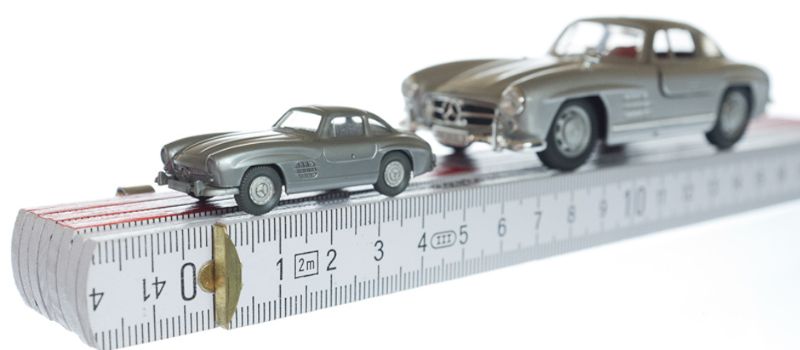
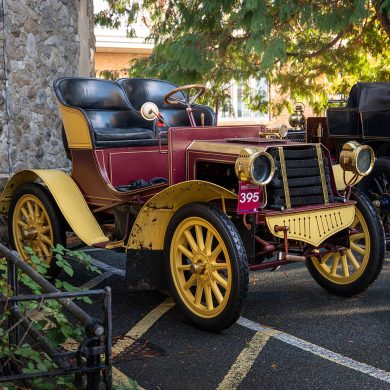
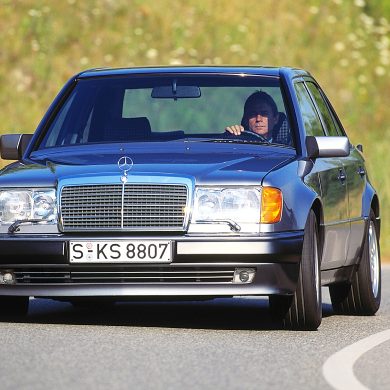
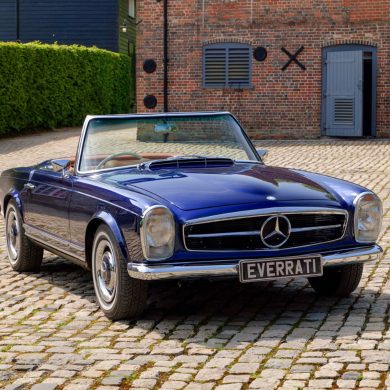
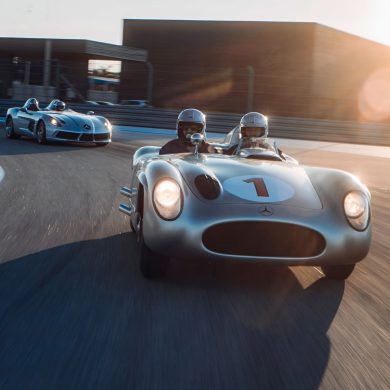
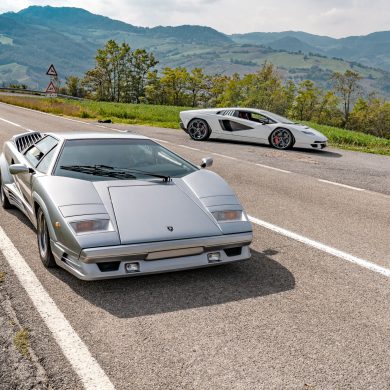


Interesting, but woefully incomplete with very many important models left out as well as a lack of thorough information. A good start if it is to be a multi-part story, but if this is just a one-shot article……
Hi Anonymous – Sorry you didn’t like the article. Given your apparent knowledge, perhaps you would like to write a more complete article?
I still sorely miss my 190SL (circa 1957) red convertible, an electric toy car with a rear-mounted motor encased in clear plastic and powered by a flat battery (European type), and a cable-steered remote mechanism.
Can anyone tell me the brand and where I can find one? None of my craigslist, ebay and etsy searches have worked. What’s a good source, perhaps in Germany, where it was manufactured, in Nürnberg?